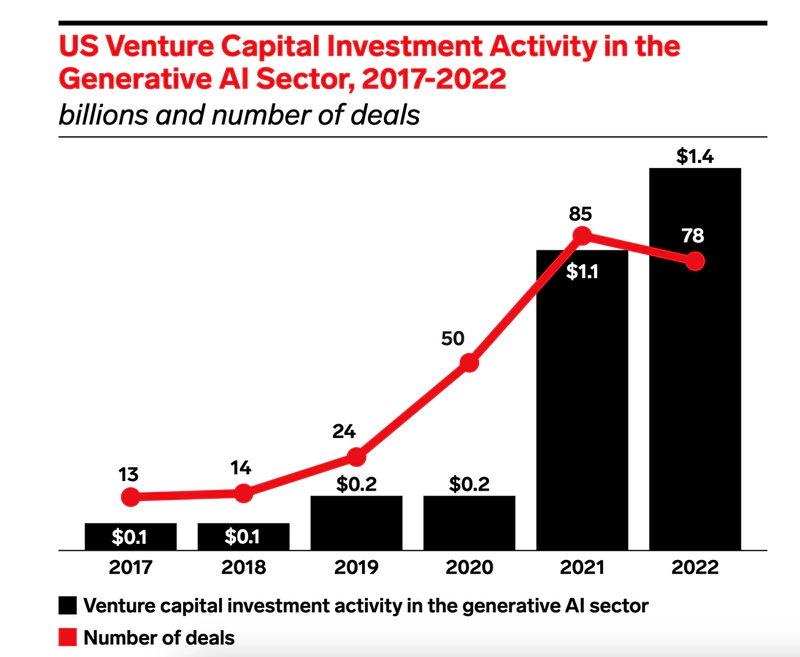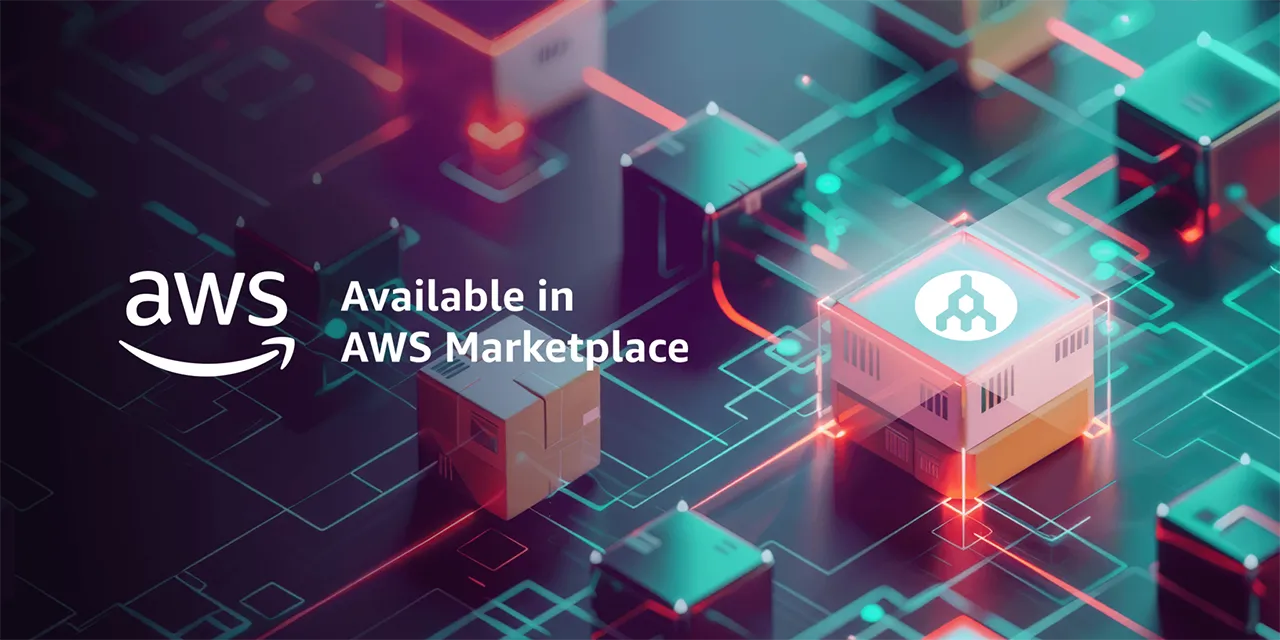
How Generative AI is Changing the Way We Harness Our Data
- Cloud networking
- October 10, 2023
- RSS Feed
By Misha Cetrone, Vice President
In today’s ever-evolving digital landscape, data is the new gold. And with the advent of generative AI in cloud services, businesses have a unique chance to transform their data in powerful new ways.
In today’s ever-evolving digital landscape, data is the new gold. And with the advent of generative AI in cloud services, businesses have a unique chance to transform their data in powerful new ways.
As the world awakens to the potential of generative AI as a service, it’s essential to grasp its fundamentals, its impact on the business landscape, and how companies can capitalize on this groundbreaking technology. For years, data has been steadily accumulating in vast silos, thanks to the proliferation of digital devices, social media, e-commerce, and more.
We’re in the midst of a digital revolution with data at its core. However, having loads of data isn’t enough. It’s the interpretation, the analysis, and the actionable insights that truly matter. This is where artificial intelligence (AI), especially generative AI (or Gen AI), enters the stage. Over the past decade, there has been a significant rise in AI models that don’t just analyze data, but also generate content and responses based on data inputs using large language models (LLMs).
Recognizable names in this realm, like ChatGPT by OpenAI or even Google’s BERT that has been around since 2018, have begun to shift public perceptions on what AI can achieve. These models started by learning users’ search intentions and evolved to influence everything from chatbot responses to screenplay creation, revealing their diverse capabilities. For enterprises, this isn’t just a tech trend. It’s a game changer.
With generative AI as a service, businesses can make informed decisions more efficiently, create tailored customer experiences, and stay ahead in the rapidly transforming market landscape. Whether you’re in a startup trying to scale or a multinational corporation, understanding and integrating Gen AI can give you a competitive edge. This drive towards embracing Gen AI is an indication of a broader shift in how enterprises are recognizing the pivotal role data plays.
It’s not just about having data – it’s about harnessing it effectively, understanding its nuances, and transforming it into actionable strategies.
Table of Contents
What is generative AI?
At its core, generative AI (or Gen AI) is a subset of artificial intelligence that focuses on creating new content. Unlike traditional AI, which often predicts or classifies based on existing data, generative AI creates entirely new data, mimicking the likes of human-written texts, music, images, or even speech.
A helpful way to start thinking of it is like the difference between reading a book (traditional AI) and writing one from scratch (generative AI).
What is generative AI as a service?
Generative AI has emerged not just as an innovative concept but as an actionable, cloud-based service. Generative AI as a service is the embodiment of this, where generative AI solutions are offered in a cloud environment (hence “as a service”). This makes it accessible to a vast array of businesses. Much like other “as a service” models, Gen AI offers scalability, reduced costs, and enhanced capabilities, opening the door for companies to integrate it into their strategic frameworks.
Leading use cases of generative AI as a service
From predicting market trends, to drafting content, or even designing bespoke products, Gen AI is transforming business operations.
Some key use cases include:
- Digital twins and infrastructure mapping – Utilizing Gen AI, businesses can create digital replicas of physical assets, processes, or systems to simulate and analyze real-world scenarios. This is invaluable for sectors like manufacturing, where enterprises can test and optimize machinery performance or supply chain logistics without tangible interventions.
- Personalized customer experiences – Gen AI can be employed to analyze vast amounts of customer data in real-time, tailoring unique experiences based on individual preferences and behaviors. For instance, an online retail platform can generate product recommendations or even personalized shopping interfaces for each visitor, greatly enhancing user satisfaction and driving conversions.
- Rapid research and development – For industries focused on innovation, Gen AI can accelerate the R&D process. Pharmaceutical companies, for example, can use generative models to predict potential drug interactions or side effects, drastically reducing the time and resources traditionally required for drug discovery.
- Content creation with a personal touch – Gen AI doesn’t just automate content generation, it revolutionizes it. Whether it’s crafting personalized marketing emails, generating product descriptions tailored to specific audiences, or even creating news articles that adapt to reader preferences, Gen AI ensures the content resonates with its intended audience, leading to better engagement and conversion rates.
- Iterative design and development – The power of Gen AI extends beyond initial prototypes. Businesses can employ AI to iterate and refine designs based on real-time feedback loops. Whether it’s A/B testing variations of a website layout or refining the ergonomics of a new product based on simulated user interactions, Gen AI enables a more dynamic and responsive design process.
- Predictive analysis: Beyond just numbers – Gen AI transcends traditional predictive models by incorporating nuanced patterns and behaviors. By analyzing not just quantitative but also qualitative data, enterprises can gain deeper insights into market trends, anticipate shifts in user behavior, and craft business strategies that are not just reactive, but also proactive.

Here are some leading examples of enterprise use cases:
Global financial services firm enhances investment strategies
Say you’re a globally renowned financial services firm that manages portfolios for thousands of high-net-worth individuals and institutional clients. With the volatile nature of markets and the myriad of financial instruments available, your firm needs to continuously update its investment strategies to maximize returns and mitigate risks. By employing the predictive analysis capability of Gen AI, you can anticipate market shifts based on a range of factors, from geopolitical events to emerging economic trends.
This advanced forecasting allows portfolio managers to make proactive investment decisions, reallocating assets before major market moves. Simultaneously, your firm leverages content creation to automate the generation of personalized financial reports for your clients. These reports, tailored to each client’s portfolio and investment preferences, provide insights into market trends, potential risks, and suggested portfolio adjustments. This automation not only streamlines the reporting process but also ensures that each client receives timely, relevant information.
Lastly, with digital twin simulations, your firm creates virtual financial models to test different investment strategies under various market conditions. By simulating these scenarios, you can determine the potential impact of various strategies, refining your approach to ensure optimal outcomes in real-world scenarios.
Incorporating Gen AI into your financial service operations, your firm not only enhances its investment strategies but also offers a more personalized, insightful experience to your clientele, solidifying your reputation as a market leader.
Retail chain streamlines product introductions
Now, imagine you run a global retail chain that introduces hundreds of new products every month. With such an extensive product range and frequency, creating unique and engaging product descriptions for online listings becomes a colossal task. Utilizing content creation via Gen AI, your retailer can automatically generate compelling product descriptions (as well as social media posts, web content, and other supporting content) tailored to various demographics and regional nuances. This ensures that every online product listing feels personalized, enhancing the customer experience.
Further, by using the predictive analysis feature of Gen AI, you can forecast which product categories are likely to trend in the upcoming months. This intel assists the procurement team in making informed stock decisions, optimizing inventory levels, and capitalizing on emerging market trends.
The benefits of embracing generative AI
- Unified data accessibility and cost-effectiveness – With Gen AI, businesses can seamlessly bridge their on-premises data with cloud repositories, using private interconnectivity. This seamless integration allows for the harmonization of data sources, whether they reside in-house or in the cloud, ensuring a fluid flow of information. By doing so, companies can avoid costly data migrations, reduce latency, and leverage the strengths of both on-premises and cloud architectures when deploying generative AI tasks. This strategic blend not only optimizes costs but also enhances the efficiency and speed of data-driven operations.
- Resource efficiency – Gen AI can automate numerous data tasks, freeing up vital human resources. Instead of dedicating teams to sift through data, Gen AI can deliver insights rapidly, allowing employees to focus on strategic actions.
- Scalability – One of the key benefits of any “as a service” model is its inherent scalability. Gen AI is no exception. Whether you’re a startup or a global enterprise, the service scales with your needs, ensuring you can handle any volume of data-driven tasks.
- Robust data protection – Embracing Gen AI doesn’t mean compromising on security. The inherent architecture of Gen AI solutions prioritizes safeguarding sensitive information. By operating in controlled cloud environments with advanced encryption and security protocols, Gen AI ensures that your data remains shielded from potential breaches, all while you harness the power of generative AI.
What are large language models (LLMs)?
Understanding large language models (LLMs) is important in the discussion of AI, as they stand as one of the most promising and discussed advancements in the domain of generative AI. Picture vast neural networks, trained rigorously on an extensive library of textual data spanning books, articles, websites, and other sources. This extensive training enables LLMs to grasp the nuances, intricacies, and depth of human language. As a result, their outputs aren’t just robotic responses, they emanate a certain human-like fluency that can often be indistinguishable from content produced by us – humans.
Their applicability is extensive. Need to draft a detailed research article or a creative piece? LLMs can do that. Require coding assistance or debugging? LLMs can step in. From answering intricate business-related queries to even engaging in casual banter, these models have opened new avenues for AI-human interaction.
Additionally, with their ability to understand context, they are also reshaping industries, offering a blend of efficiency and precision that was previously unimaginable. And for enterprises, the implications are vast. With LLMs, companies can automate certain tasks without sacrificing the quality of communication, ensuring that stakeholders, both internal and external, receive timely, accurate, and high-quality information.
How generative AI supports your cloud data
Data isn’t just about storage: It’s about discernment. Gen AI allows businesses to process, understand, and harness their data. By tapping into Gen AI, companies can gain insights, predict market trends, and make data-driven decisions. Regardless of where your data resides—be it in a private cloud, a public cloud, or a third-party data center—Gen AI ensures you’re not bound by these limits.
How to get started with generative AI for your business
Embarking on the Gen AI journey involves a few key steps:
- Identify needs – Begin by delving deep into your organizational objectives and determining how generative AI can enhance your processes and results. Here are some considerations:
- Operational efficiency – Are there manual processes or repetitive tasks within your organization that can be automated using generative AI? For example, if you’re in e-commerce, automating product description generation can save substantial time.
- Customer engagement – Is enhancing customer experience a priority? Generative AI can be utilized in creating responsive chatbots that can cater to customer queries round-the-clock, providing personalized and timely responses.
- Innovation and product development – Are you looking to create new products or services? Gen AI can assist in prototyping or even in brainstorming sessions by generating ideas or designs based on existing data patterns.
- Data analysis and insights – If you’re inundated with data and find it challenging to derive actionable insights, Gen AI can aid in predicting market trends, customer behaviors, and even potential business threats or opportunities.
- Choose a provider – Leading public cloud providers have developed specific products and platforms tailored for generative AI as a service:
- Amazon Web Services (AWS) – With services like SageMaker, AWS empowers businesses to easily build, train, and deploy machine learning models, including generative AI models. Their latest AWS Bedrock is a fully managed service that allows you to choose from many high performing foundational models (FMs) to build generative AI applications.
- Microsoft Azure – Azure’s Machine Learning service provides tools for building next-generation AI applications. Azure also offers a suite of cognitive services which can aid in the implementation of Gen AI features. Their latest Azure Open AI provides REST API access to powerful LLMs including GPT-4, GPT-35-Turbo, and Embeddings model series. Developers can easily adapt these models for tasks like content generation, summarization, semantic search and natural language to code translation.
- Google Cloud – AI and AutoML allow businesses to train high-quality custom machine learning models with minimal effort and expertise. Their latest offering using LLMs, Google’s new PaLM API can be used for a variety of applications and provides access to models that are optimized for multi-turn use cases such as content generation and chat, and general-purpose models that are optimized for areas such as summarization and classification.
Select a provider that aligns with your organization’s objectives and the specific Gen AI functionalities you’re aiming to leverage.
Integration – The integration of generative AI into your infrastructure should be as seamless as possible, ensuring that your existing workflows and processes are augmented, not disrupted. Key points of consideration include:
- Infrastructure compatibility – Before diving deep into Gen AI integration, ensure your current IT infrastructure is compatible with the Gen AI tools and platforms you’re considering. This includes assessing hardware, software, and network requirements.
- Network solutions – As businesses today operate in hybrid environments with data residing in on-premises systems, public clouds, and private clouds, it’s paramount to have a solution that bridges these diverse habitats. This is where Megaport comes into play as a global Network as a Service (NaaS) provider. By using Megaport, businesses can ensure secure, fast, and dedicated connections between their data sources and Gen AI platforms. This private, dedicated connectivity is crucial for real-time data processing and for maintaining data integrity and security while optimizing costs.
- Staff training – Introducing a new technology means ensuring that your team understands how to use it effectively. Consider organizing training sessions, workshops, or partnering with your Gen AI provider for onboarding processes to ensure your team can leverage the technology to its fullest.
- Scalability and flexibility – As your business grows and evolves, your Gen AI needs might change. It’s important to ensure that the integration is scalable and flexible, allowing for easy expansion or modification of services based on future requirements.
Monitor and evolve – The world of generative AI is dynamic, with the landscape shifting rapidly as new advancements emerge. As such, it’s crucial to stay nimble and adaptive in your strategy. Consider these key points:
- Performance tracking – Consistently monitor how Gen AI is performing in your environment. Use analytic tools to evaluate the accuracy, speed, and relevance of generated content or predictions.
- Feedback loop – Establish a feedback system where end-users and stakeholders can provide their inputs on the Gen AI outputs. Their firsthand experience can offer invaluable insights on areas for refinement.
- Stay updated – Cloud providers like AWS, Azure, and Google Cloud frequently update their Gen AI offerings with enhanced features, more extensive databases, and improved algorithms. Regularly review updates and incorporate them when beneficial.
- Scalability assessments – As your organization grows and evolves, so will your Gen AI needs. Periodically assess if your current Gen AI solution scales with your growth or if there’s a need to upgrade.
- Strategic reviews – Align with business leadership to review the strategic impact of Gen AI. Determine if the solutions in place continue to support long-term business objectives, or if there’s a need to pivot.

Generative AI and, by extension, generative AI as a service, is not just a fleeting trend: It’s the future. As businesses increasingly lean into data-driven strategies and operations, the integration of generative AI becomes not just beneficial, but essential. The rapid progression of technology demands flexible and efficient solutions to manage and optimize data transfer across different platforms.
As businesses grapple with data sprawled across various habitats—public clouds, private clouds, or third-party data centers—it’s crucial to have a solution that provides seamless connectivity. Megaport, with our cutting-edge global Network as a Service (NaaS), offers just that. By ensuring unrestricted, real-time access to data irrespective of its residence, Megaport eliminates the barriers and enables businesses to dynamically link their data to Gen AI offerings in public clouds. The result? Not just enhanced real-time insights, but also unprecedented operational cost efficiency and scalability.
So, as we stand on the cusp of this technological evolution, it’s not just about embracing generative AI, but ensuring your business has the right network, like Megaport, to fully harness its potential. As we venture into this promising future, it’s time for businesses to seize the moment and redefine their futures.


